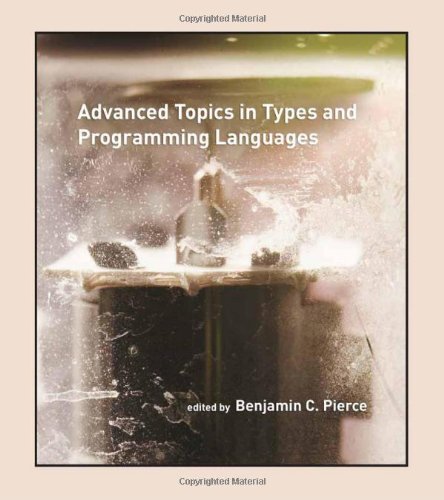Types and Programming Languages pdf download
Par grandstaff patrick le mercredi, août 24 2016, 22:52 - Lien permanent
Types and Programming Languages. Benjamin C. Pierce

Types.and.Programming.Languages.pdf
ISBN: 0262162091,9780262162098 | 645 pages | 17 Mb

Types and Programming Languages Benjamin C. Pierce
Publisher: MIT
Question from Pierce's Types and Programming Languages. This report describes an extension to the C programming language to introduce the notion of ranged integers, that is, integer types with a defined range of values. In a future post I will probably look at some already existing programming languages and examine how much current languages are able to meet my desired features. On page 56 at the top of the page he has the reduction: ( λx . Practical Applications of Good Math: Type Checking in Programming Languages. A type system defines how a programming language classifies values and expressions into types, how it can manipulate those types and how they interact. The robot programming languages can be classified according to the robot model, the type of control structures used for data, the type of motion specification, the sensors, the interfaces to external machines, and the peripheral used. I would be willing to place a bet that most computer programmers have, on multiple occasions, expressed an opinion about the desirability of certain kinds of type systems in programming languages. (Since I see that there are still links pointing at this post, I'll point out here that this blog has moved to scienceblogs. So I am currently studying the language of "serious" language researchers in order to write a paper about Cat, and the book "Types and Programming Languages" by Benjamin Pierce has turned out to be a huge boon! Use lower case for variables and upper case for constants. Abstract: "Type systems based on intersection types have been studied extensively in recent years, both as tools for the analysis of the pure [lambda]-calculus and, more recently, as the basis for practical programming languages. Why can't we make them if we are so inclined? In the case of SLAM this abstraction seems to be by reducing C programming Language's type system to only a boolean type system, clearly removing the infiniteness of the space caused by complex types. I have seen bit-fields, but I have heard they are not portable, and perhaps not used as well? His papers on definitional interpreters, syntactic control of interference, practical intersection types, and Algol-like programming languages are widely cited. I boil it down to 10 practices – or “commandments” if you like – which often break down or are not properly understand to begin with. Why don't we have data types that are 4 bits in size? Notes on The C Programming Language Chapter 2: Types, Operators and Expressions. X ) )( u r ) evaluates to u r ( λx .